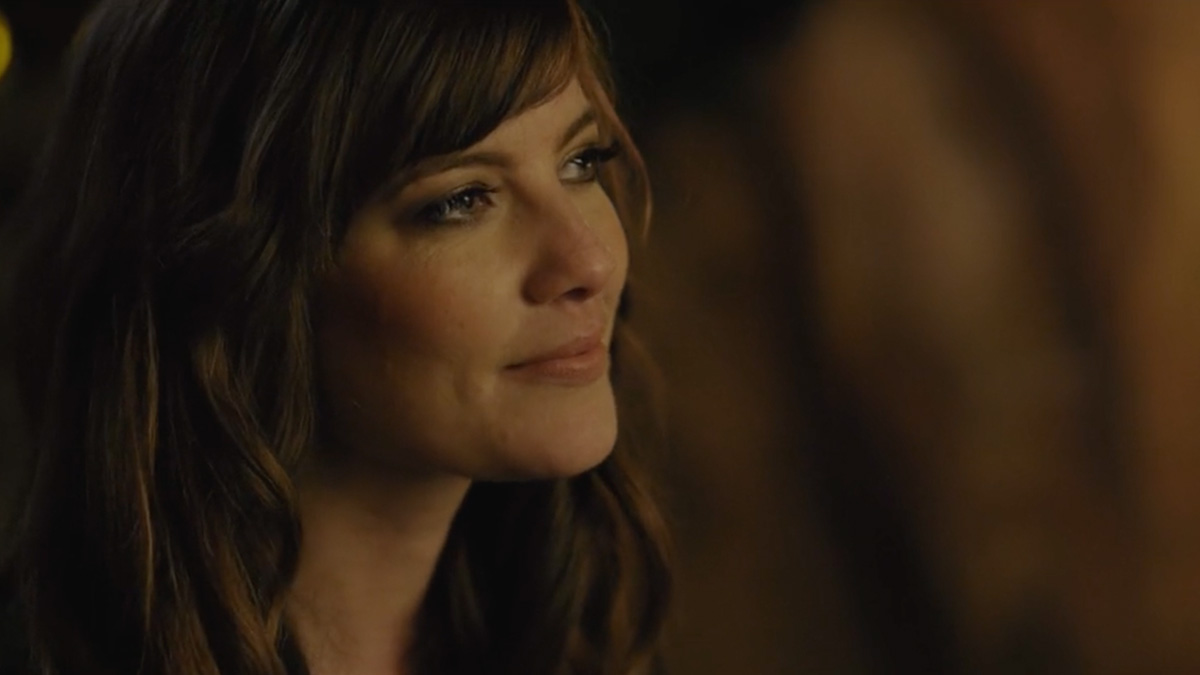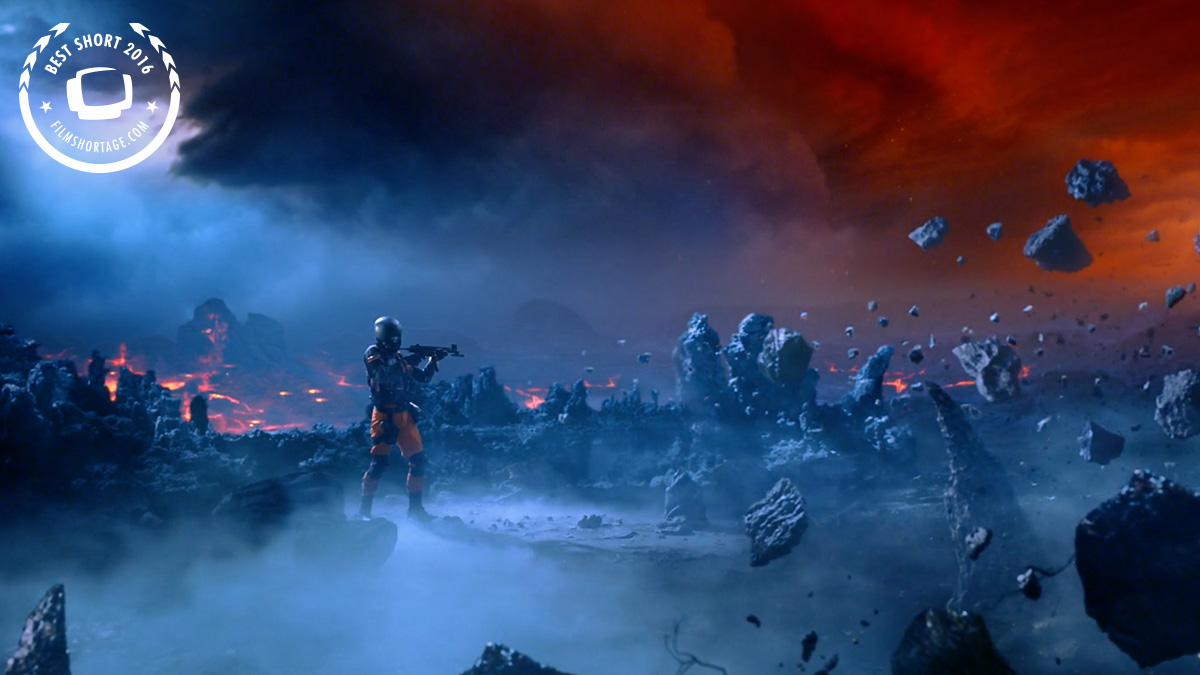A group of people meets in the same apartment under different circumstances, facing the need to make choices trying to determine the boundaries of adequacy.
‘Adequately’ is set in one of the apartments in Soviet Union Brezhnev-era panel house where a merry funeral feast takes place after a silent wedding. The characters meet in the same apartment under different circumstances and face the need of making choices trying to determine the boundaries of adequacy. The chosen era of the mid-80s works like a distorted mirror to today rhyming with the reality in viewers minds. What is adequacy, how is it determined and where are the limits of what is acceptable and who is there to judge?
The twisted and thrilling music video uses creative and layered storytelling to keep us on edge. With its fabulous photography and constant motion, we enter a defying and dreamy setting from beginning to end to set its stupendous tone. We checked in with director Leo Gorenshtein who told us a little more about the video.
Can you tell us what inspired you to bring this story to life?
First of all, We started with the music.
Initially, the track Adequately sounded different. It was more lyrical. But what you hear in the video is such a nervous and paranoid remix. Well, from here, from this paranoid state, the general mood of the music video appeared.
Then a hero appeared, such a hero of Russian classical literature – a Superfluous man.
Then it became clear that the video should look like a kind of Mobius strip, with constant repetitions but some deviations from the original. A wedding that looks like a funeral or a funeral that looks like a wedding. Such a non-trivial choice for a hero. We specifically chose the mid-80s in the USSR to better resonate with today. Then on December-January 21 and 22, when we were preparing and shooting our video, we could not think that our ideas would resonate so quickly with reality.
Now I understand that we wanted the piece to be riddled with anxiety and paranoia and all based in a fascist small town where the problems we see in that micro-world emanate outwards.
Tell us about the location scouting, the stairway, and the room.. were you looking for something specific – or did the location help define the story through discovery?
When we were already busy with pre-production, we realized that we wanted to place the action of the music video in a specific building on the Sverdlovskaya embankment in St. Petersburg. This is a typical work of the era of Brezhnev’s brutalism, but this building has its own characteristics. First: this is an original project.
Secondly: in this house, there was a Leningrad wedding salon and a radio parts store “Radio Muzyka”, as evidenced by design on the roof. In addition, Arkady Severny gave concerts in the restaurant on the ground floor (“the Leningrad answer to Vysotsky”). All these “indirect” signs completely fit into the world of the music video. We found an old Soviet postcard for the opening shot and brought it to life a bit on the chart. Well, for the final shot, we built a cardboard layout of a piece of this house. We did not want to create a sense of realism. I hope you understand why? =)
One of our main tasks was to show two different apartments, one underneath another. We had to create the same layout but with different furnishings. We found an abandoned old boiler house on the outskirts of Moscow.
It was a one-floor building without heating (boiler without heating, ha-ha), and we shot all the festive scenes on the first day. The next day, our art department team changed the wallpapers and other props and prepared the twin room.
The stairs turned out to be the most painful space for our producer.
Initially, we found a staircase at the base, which was not a quadrangle, but a hexagon. That would be the perfect rhyme with a camera shutter. So the staircase is a transitional state for our hero, just like the image passing through the lens and falling on the film passes through the same shutter. But unfortunately, we were unable to negotiate with the tenants of that house.
As we filmed the spill, the barrel of black goo went out of control and flooded all the floors. A particular irony is a fact that just a couple of weeks before our filming, the entrance was overhauled. We had to repaint the walls, wash the steps. But it was worth it.
The use of camera motion made us feel like we were in a constant surreal dream. Was every motion and tilt choreographed beforehand or did you improvise on set?
We wanted to achieve such an old Soviet image. as if it was all filmed on a rather bad film by Svema. However, I like the image to be fairly up-to-date. In the end, we shot almost the entire clip with one somewhat vintage Arri standard prime 12mm lens. I’m a big fan of randomness. And in this film, unique gaps were developed for this accident.
At first, I set up a mise-en-scène with actors having fun at a funeral or sitting in silence at a wedding. Well, then, the DOP snatched out their reactions. At the beginning of his career, our DOP worked as a videographer at weddings, so he had an excellent experience =) Thus, some shots were born. For example, the actress actually fell asleep at the table while we were filming in the other direction. We noticed this and asked to fall asleep already in the frame, adding a bit of comedy by shouting “Gorko” (which means Bitterly).
What was the most challenging scene for you to film?
The most challenging thing for us was to shoot dancing in the water. We filmed in Moscow in January. The water was warm but instantly turned ice cold. So girls dancers had to wallow in this water. Of course, everyone tried to work with clenched teeth. And everyone in the crew understood they had no right to make a mistake. In the end, we filmed everything in 2-3 takes.
What has this film taught you about filmmaking?
As someone who has been shooting commercials for a long time, it was pretty easy for me to switch to something creative. I liked it very much. I have several music videos in development right now and one short film. I hope something from this list happens.
What are your favorite short films?
I’m not a big fan of shorts. Instead, I prefer music videos that are short films. For me, this way, they have a more significant impact on the viewer and untie the hands of the experimental director since the music already drags the narrative along with it.
Of course, I’m a big fan of everything old, like the works of Jonathan Glazer. But probably my favorite music video is Daniel Wolfe’s Time to Dance.
Which films can you say directly inspired by this film?
As soon as we decided on the hero, I thought about Roman Polanski’s “The Tenant” and the Coen Brothers’ “Burton Fink” too. I also like to integrate various kinds of myths into my work, but at the same time, change them. For example, in our film, Charon (the father of the Bride) pays for the entrance to the “Party” on the contrary. Such is the irony.




